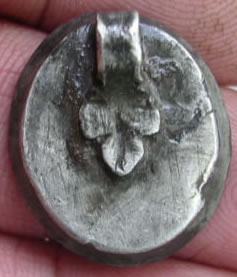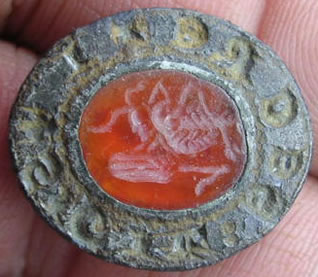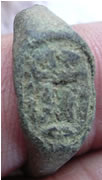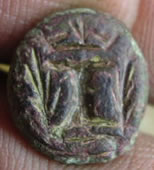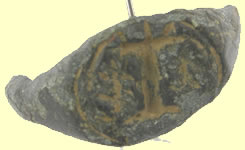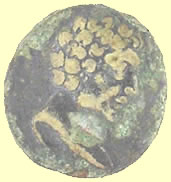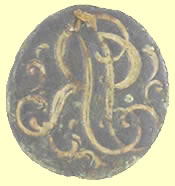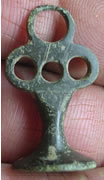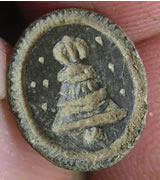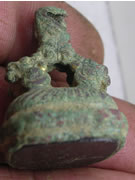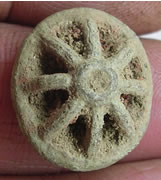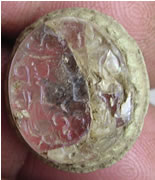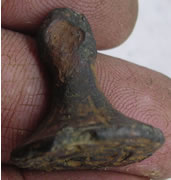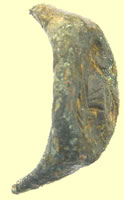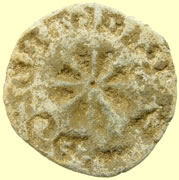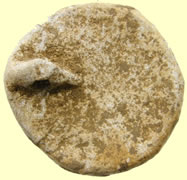- News
- Finds
- History
- Holidays
- Arch'gy
- Exporting
- Treasure
- Awards
- Tips
- Comps
- Forum
- Club info
- Contact
 |
Metal detecting holidays in England with the Worlds most successful metal detecting club Twinned with Midwest Historical Research Society USA |
|
Seal
Matrix and Intaglio |
|||
|
Seal Types
Prior to the fifteenth century pointed oval designs, called vesica seals, were popular with noble women and also with high ranking ecclesiastics. The shape allowed room either to depict a full length standing figure of the owner, or alternatively to show scenes at two levels. Monastic seals often used the latter device, with a main, upper register depicting the monastery’s patron saint, and a small lower register in which the prior or abbot was shown praying. By the fifteenth century, vesica seals were somewhat out of fashion, but they still occur on documents, because monasteries in particular tended to continue using seal matrices made years — or sometimes centuries — earlier. By the fifteenth century, use of seals was widespread. One nobleman is said to have remarked acidly that in earlier times it had not been the custom for every Tom, Dick and Harry to use a seal. Most seals were quite small, and the most common forms of matrix were the pyramid seal (a small, usually circular design with a stem on the back, by which it could be held) and the signet, which could be of any shape (but was often circular or oval) and comprised the bezel of a ring. Seal impressions are usually of wax, though royal and papal seals were sometimes impressed in metal such as lead, or even gold. Such metal impressions were called bullæ. (This word is the origin of the expression ‘papal bull’, referring to a sealed letter from the pope.) Seal impressions were not directly attached to their documents, but hung from them on small strips of parchment or (for persons of high rank) silk threads. |
|||
C1300 Solid silver medieval vessica seal 62.1g, 21.96mm L x 18.81mm x 5.51mm W (excluding hanger) |
|||
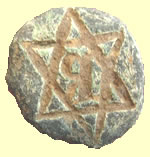 |
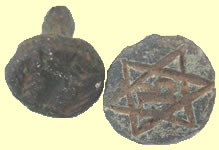 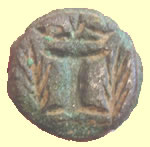 |
||
|
2- 15thC seal matrix - Jewish symbol & capital 'R' - Initial capital 'I' Anonymous: letter I early 15thC. An initial with crown above, branches at the side, was a design that became incrreasingly common in the 15thC and was often used on a signet ring as below. The letter suggests it stood for the owners forename. This example was used in 1424 by Edward Saddler, clerk
Seal ring of Edward Saddler
Another 15thC seal matrix used by Edward Saddler - Medieval seal ring, 24.84mm dia
|
|||
   |
|||
|
This
early 13thC Medieval seal matrix is a superb example and is very unusual
having a seal matrix on both ends. One end has a shield with lombardic
script around the outside and the other has 2 letters
|
|||
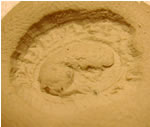  |
|||
|
13th/14thC
seal matrix - impression looks like a frog or toad (c) |
|||
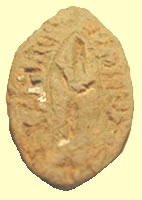 (c) (c)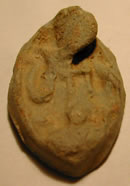 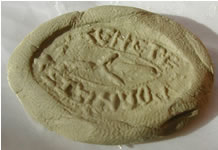 |
|||
|
13thC Medieval
Seal (Vessica shape) Very unusual design with symbol on rear
|
|||
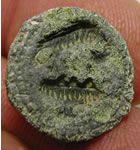 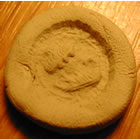 |
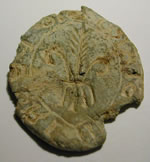 |
||
|
12thC seal
matrix. The clay impression clearly shows a falcon attacking a bird
lying on it's back |
1260
AD Non Heraldic personal seal |
||
  |
|||
|
13thC seal
matrix, lamb with legs tucked underneath
|
|||
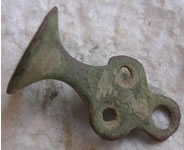 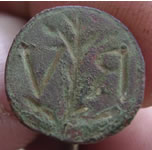 |
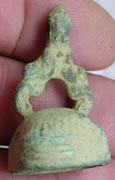 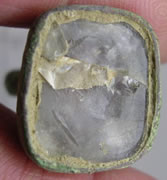 |
||
|
16thC Copper
alloy Seal matrix 'RV' |
Georgian fob seal with head facing right impression |
||
|
|
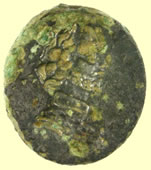 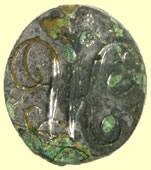 |
||
|
Georgian
Fob seal found by Wis Neil |
Georgian silvered fob seal matrix - mans head facing right, obv intials script 'LK' |
||
   |
|||
|
Stunning
condition 13th to 15thC seal matrix |
|||
  |
|||
|
13th to
15thC seal matrix - 2 people facing with heart in the middle |
|||
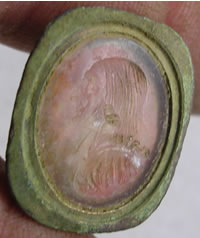  |
|||
|
Georgian
fob seal matrix with man looking left |
|||
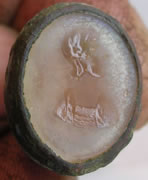 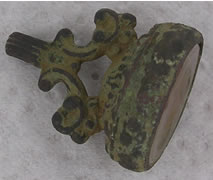 |
|||
|
Georgian
fob seal matrix with woman looking right |
|||
 |
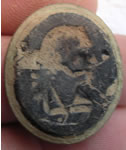 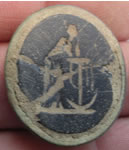 |
||
|
Fob seal
matrix - plain |
18thC fob seal with head and anchor, probably belonged to a ships captain. |
||
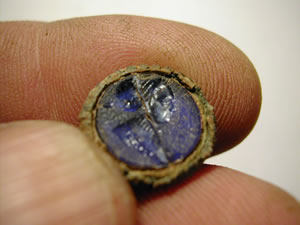 |
|||
|
18th Fob
seal matrix with woman facing right |
|||
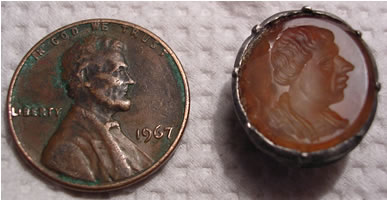 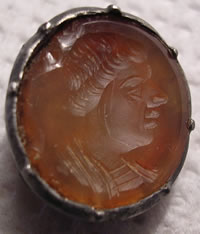 |
|||
|
Fantastic
intaglio - double faced as you change the light - man and woman found
by Boston Bud |
|||
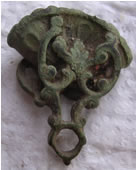 |
  |
||
|
Georgian
fob seal
|
Unusual
bronze seal with full legend around the rim. Generally these are Georgian
in date but further cleaning of the inscription should help with a better
ID |
||
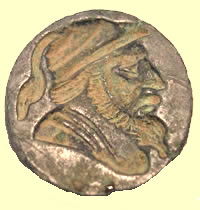 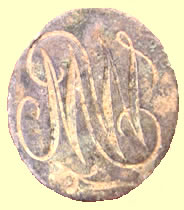 |
|||
|
18thC Bronze
face with the initials MW on the reverse - Seal matrix
|
|||
   |
|||
1260
AD Non Heraldic personal seal of freeholders of Charwelton Nothhamptonshire.
4 have been found attached to pasture rights. The design is typical of
mid 13thC non heraldic seals like the one published on the 23rd Jan post,
a fleur -de- lis, a flower, the lamb of god and each names it's owner
on the legend. |
|||
|
Stunning 16th/17th Seal matrix with Bell impression - Georgian fob seal with red stone - Very unusual seal matrix , 2 stag heads with Fleur De Lis on heraldic shield. The cartwheel back is not one I have seen before so I will be researching it. |
|||
|
c 13thC Medieval seal matrix |
|||
  |
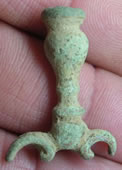 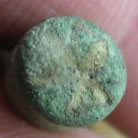 |
||
|
Georgian
seal matrix - unusual design probably had a wooden handle attached |
16thC seal matrix with flower design - very unusual type
|
||
 |
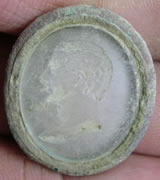 |
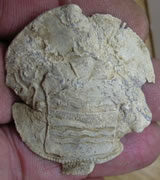 |
|
1st to 4thC Roman bronze seal ring |
Georgian fob seal intaglio |
Heraldic lead mount - need researching |
|
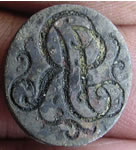 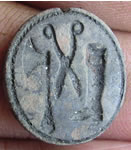 |
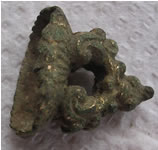 |
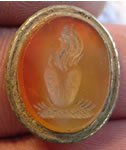 |
|
Georgian fob seal |
Georgian
fob seal |
Mid 17thC
Heart and flame intaglio seal |
|
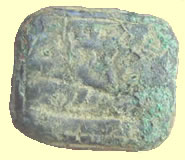 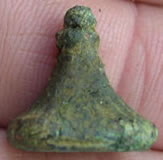 |
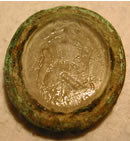 |
||
Medieval seal matrix |
18thC Fob
seal |
||
  |
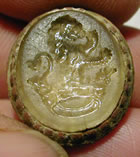 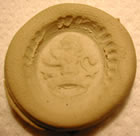 |
||
Medieval seal matrix |
17th/18thC
seal matrix with lion and crown (r) |
||
17thC Charles II fob seal - 'Carolius'
|
Large Georgian desk seal matrix |
||
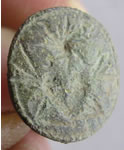 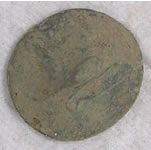 |
Medieval bronze seal ring - bearded figure sitting - 2.70g, 18.86 mm dia x 9.62 mm W |
||
17thC seal matrix |
|||
  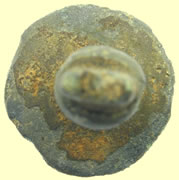 |
|||
Medieval seal matrix 20.22m dia , 9.34g |
|||
Circa 1260 AD lead personal seal , 4 have been found attached to pasture rights. The design is typical of mid 13thC non heraldic seals
|
|||
 |
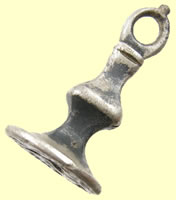 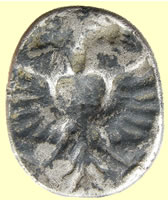 |
||
Georgian fob seal with mans head facing right |
Silver seal matrix – double headed eagle with heart - reported as treasure to the museum - difficult to date as it has the style of a Medieval seal but it probably 16th/17thC The British Museum experts will be able to give us more information later. 5.02g, 25.09mm L x (13.79mm x 10.98mm seal head) |
||
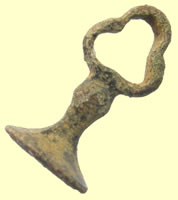  |
|||
Late 16thC seal matrix with Fleur de Lis impression |
|||
   |
|||
Early Medieval seal matrix - bell type
|
|||
Medieval seal matrix |
|||


